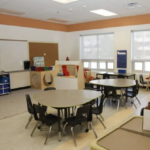NEW PUBLICATION
IPE/BC is pleased to announce a new publication based on our Structure of Education Funding research project. This descriptive study focuses on how public education is funded in each of the provinces: Education Funding Models in Canada: Patterns of Similarity and Details of Difference.
The technical report begins with an analysis of general funding patterns and the elements that drive them. Equity is a central intention build into Canadian funding models, although how best to achieve this is the subject of contestation. Funding decisions have become increasingly centralized in provincial governments, resulting in a decline in the autonomy of school boards, with boards in some provinces being eliminated altogether. Property taxes are decreasing sources of funding with provincial revenue from other taxation making up a greater proportion. The report depicts how much funding is provided and how funding is distributed in each province, but does not evaluate the (in)adequacy of funding.
We found most provinces fund education on a per-student basis, and only the provinces with the smallest number of student have cost-based education funding. Funding for the inclusion of students with special needs is a source of particular contention in many provinces and currently two competing models exist: a model based on the identification of specific and individual student needs and one based on a statistical model estimating the likely prevalence of special needs within school districts. Both models are currently used, and discussions of their appropriateness are ongoing.
Half of the provinces directly fund private schools and three fund Catholic schools. Other forms of privatization within the public school system are increasingly common. Every province gives school boards and schools the right to fundraise using techniques such as international student tuition fees, revenue generating academies, and school building fundraising by parents and students.
IPE/BC appreciates any feedback on this technical report.


